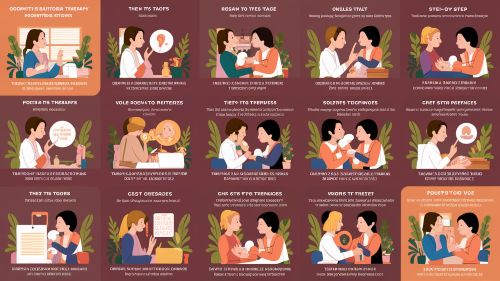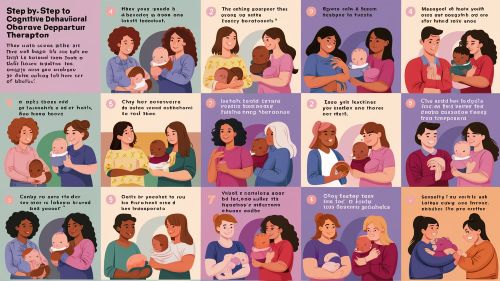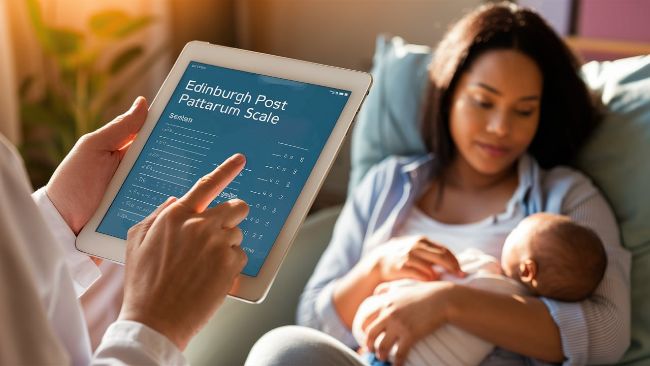In the chaotic, beautiful, and overwhelming world of new motherhood, it can be incredibly difficult to make sense of your own feelings. Are you just tired? Is this the “baby blues”? Or is the persistent sadness, anxiety, or numbness you feel something more?
You feel lost, and you need a landmark. You need a way to gauge where you are.
For decades, one simple tool has served as a vital compass for millions of new mothers and their healthcare providers: the Edinburgh Postnatal Depression Scale (EPDS).
You may have been handed this 10-question form at your six-week checkup, or you may have stumbled upon it during a late-night search for answers. It might seem like just another piece of paper, but it is one of the most powerful tools available in postpartum care.
This guide will demystify the EPDS. We will explain what it is, why it’s so important, how to use it honestly, and—most crucially—what to do with the results. Think of this not as a scary test, but as the first step in a life-changing conversation.
What Exactly Is the Edinburgh Postnatal Depression Scale?
The EPDS is a 10-question, self-report questionnaire designed to screen for symptoms of depression and anxiety in the postpartum period. Developed in 1987, it has become a global standard used by doctors, midwives, and therapists.
Here’s what you need to know about it:
- It’s a Screening Tool, Not a Diagnostic Tool: This is the most important distinction. The EPDS cannot diagnose you with postpartum depression. Only a qualified healthcare professional can do that. What it can do is effectively identify women who are likely suffering from a perinatal mood disorder and need further evaluation.
- It Measures a Spectrum: It doesn’t give a simple “yes” or “no.” It provides a score that reflects the severity of your symptoms over the past seven days.
- It’s Quick and Simple: It takes less than five minutes to complete.
- It Screens for More Than Just Sadness: While “depression” is in the name, several questions on the EPDS are excellent at picking up on postpartum anxiety, a condition just as common as PPD.
Key Takeaway: The EPDS is not a test you can pass or fail. It is a conversation starter. Its purpose is to translate your confusing, internal feelings into a clear, objective starting point for a discussion with someone who can help.
How to Use the EPDS: A Step-by-Step Guide for an Honest Assessment
To get the most out of this tool, you need to be brutally honest with yourself. There is no judgment here. This is for your eyes only, to start.
- Find a Quiet Moment: Don’t do this while you’re also trying to make lunch or soothe a crying baby. Take five minutes for yourself.
- Read the Instructions Carefully: The questions ask about how you have felt over the past 7 days. Not just today, and not a month ago.
- Choose the Answer That Comes Closest: For each question, select the one response that is closest to how you have been feeling. Don’t overthink it. Your first, gut-level response is often the most accurate.
- Be Honest. Radically Honest. This is not the time for the “I’m fine” reflex. No one is grading you. The more honest you are, the more useful the result will be for you.
The Edinburgh Postnatal Depression Scale (EPDS) Questionnaire

As in the past 7 days…
1. I have been able to laugh and see the funny side of things.
* (0) As much as I always could
* (1) Not quite so much now
* (2) Definitely not so much now
* (3) Not at all
2. I have looked forward with enjoyment to things.
* (0) As much as I ever did
* (1) Rather less than I used to
* (2) Definitely less than I used to
* (3) Hardly at all
3. I have blamed myself unnecessarily when things went wrong.
* (3) Yes, most of the time
* (2) Yes, some of the time
* (1) Not very often
* (0) No, never
4. I have been anxious or worried for no good reason.
* (0) No, not at all
* (1) Hardly ever
* (2) Yes, sometimes
* (3) Yes, very often
5. I have felt scared or panicky for no very good reason.
* (3) Yes, quite a lot
* (2) Yes, sometimes
* (1) No, not much
* (0) No, not at all
6. Things have been getting on top of me.
* (3) Yes, most of the time I haven’t been able to cope at all
* (2) Yes, sometimes I haven’t been coping as well as usual
* (1) No, most of the time I have coped quite well
* (0) No, I have been coping as well as ever
7. I have been so unhappy that I have had difficulty sleeping.
* (3) Yes, most of the time
* (2) Yes, sometimes
* (1) Not very often
* (0) No, not at all
8. I have felt sad or miserable.
* (3) Yes, most of the time
* (2) Yes, quite often
* (1) Not very often
* (0) No, not at all
9. I have been so unhappy that I have been crying.
* (3) Yes, a lot
* (2) Yes, sometimes
* (1) Only occasionally
* (0) No, never
10. The thought of harming myself has occurred to me.
* (3) Yes, quite often
* (2) Sometimes
* (1) Hardly ever
* (0) Never
URGENT: A Special Note on Question 10
If you scored anything other than “Never” (a 0) on question 10, this is a sign that you need immediate support. Suicidal thoughts are a symptom of a treatable illness, not a character flaw. You are not a bad person for having these thoughts, but they must be taken seriously.
Please stop reading and take one of these actions RIGHT NOW:
- Call or text the 988 Suicide & Crisis Lifeline. It’s free, confidential, and available 24/7.
- Go to the nearest hospital emergency room.
- Call 911.
- Tell a trusted partner, friend, or family member that you are not safe and need help immediately.
Your life is valuable. Your baby needs you. Help is available.
[Use a “Cover” or “Columns” block for this section. Give it a red or bright yellow background. Use large, bold font. This needs to be the most visually arresting part of the page.]
“I’ve Got My Score… Now What?” Interpreting Your Results
Add up the numbers in parentheses for each of your 10 answers. The maximum score is 30.
- Score of 0-9: A score in this range suggests a low likelihood of clinical depression or anxiety. However, this does not invalidate your feelings. If you still feel “off” or are struggling, you should trust your gut and talk to someone.
- Score of 10-12: This is often considered the “gray area.” A score in this range indicates the possible presence of depression or anxiety. It’s a clear signal that you should monitor your feelings closely and schedule a conversation with your healthcare provider.
- Score of 13 or higher: A score in this range indicates a high likelihood of a perinatal mood and anxiety disorder. It is strongly recommended that you seek professional help from your doctor or a mental health professional as soon as possible.
Remember: A score is not a diagnosis. It’s a number that helps quantify your struggle. A score of 14 doesn’t make you “sicker” than someone with a 13. It simply confirms that what you’re feeling is significant and deserves attention.
The Most Important Step: Starting the Conversation
Your EPDS score is your key. Now it’s time to use it to open a door.
Who to talk to:
- Your Healthcare Provider: This is your OB-GYN, midwife, or primary care physician. They are trained to see these scores and guide you to the right resources.
- A Mental Health Professional: A therapist or psychiatrist, especially one specializing in perinatal health.
- Your Partner or a Trusted Loved One: Sharing your score can be a concrete way to say, “This is how much I’m struggling. I need your help.”
How to Start the Conversation (Sample Scripts):
Sometimes the hardest part is finding the words. Use these as a starting point.
- To your doctor: “I took the Edinburgh Postnatal Depression Scale at home, and my score was a [Your Score]. I’ve been feeling [sad/anxious/overwhelmed], and I’m concerned. Can we talk about what my options are?”
- To your partner: “I need to share something with you because I need your support. I did a screening for PPD, and my score was high. It confirms what I’ve been feeling—that this is more than just baby blues. Can we look at finding me some help together?”
Bringing the questionnaire with your score to your doctor’s appointment can be an incredibly powerful and direct way to communicate your needs.

Frequently Asked Questions (FAQ)
Q1: Can I diagnose myself with postpartum depression using the EPDS?
No. The EPDS is a screening tool, not a diagnostic instrument. Think of it like a blood pressure cuff at the pharmacy—it can tell you if your numbers are high, but it can’t tell you why or what specific condition you have. A proper diagnosis requires a clinical evaluation by a healthcare professional.
Q2: How often should I take the EPDS?
Your provider will likely give it to you at your 6-week postpartum checkup. However, you can use it anytime you are concerned about your mental health. Some experts recommend taking it at 3 months and 6 months postpartum as well, as PPD can develop anytime in the first year.
Q3: What if my score is low, but I still feel terrible?
Trust your gut. You are the expert on your own body and mind. The EPDS is a good tool, but it’s not perfect. If you feel like you are struggling, even with a low score, you still deserve to seek help. Your feelings are valid, regardless of what a questionnaire says.
Your Compass to Getting Well
The journey through new motherhood is not a straight line. There will be hills, valleys, and moments where you feel completely lost. The Edinburgh Postnatal Depression Scale is a simple, powerful compass you can use to get your bearings.
It gives you a language for your struggle. It gives you an objective measure to share with others. And most importantly, it gives you a clear, undeniable reason to take the next brave step.
Use it not as a judgment, but as a guide. Use it to start a conversation. Use it as the first step on your path back to yourself.
